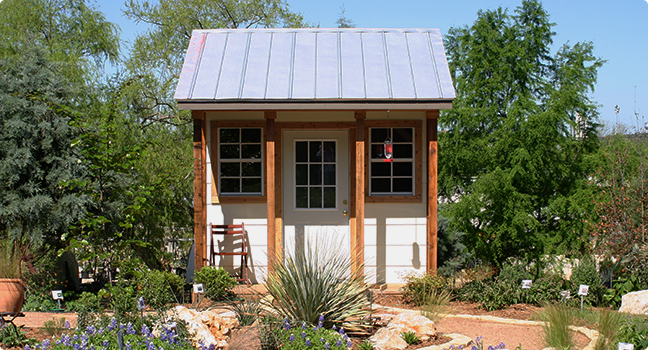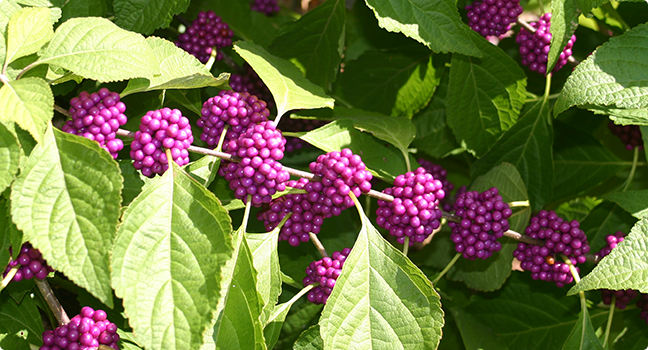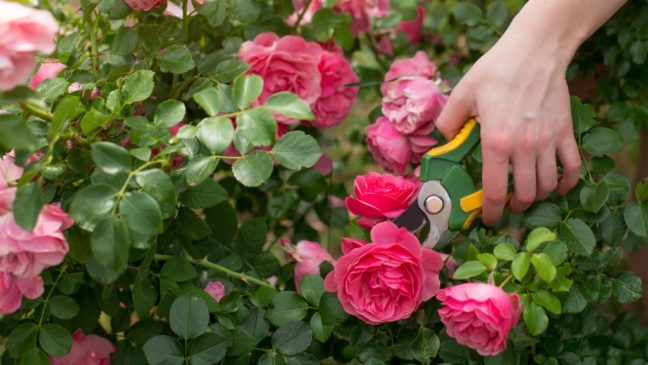A Texas Hill Country Landscape design blends a formal landscape into the untouched natural area of a property.
The Texas Hill Country is located on the Edward escarpment of the Edwards Aquifer. This area encompasses the fast-growing Austin to San Antonio corridor. The region is characterized by thin alkaline soils and limestone outcroppings supporting Live Oaks and springtime drifts of bluebonnets and other wildflowers.
As suburbs continue to be developed in the hill country, the natural landscapes that make the area desirable are in danger of being replaced with a more traditional landscape. The thin, alkaline soils make these types of landscapes difficult to maintain.
Today many home builders and homeowners are choosing to leave a portion of their land in the natural state that drew them to the area. A landscape that is designed to blend seamlessly from the untouched area of a property to a more formal landscape close to the house can be achieved through a Texas Hill Country landscape design.

Elements of a Texas Hill Country Landscape
- Use of existing limestone outcroppings
- Minimum use of turf
- A space for wildflowers
- Use of plants native to the hill country
- Areas of the property left in its natural condition

Plants for Texas Hill Country Landscape:
- Trees – Hackberry, live oak, red oak, bur oak, Texas persimmon, Ashe juniper, Texas mountain laurel, Mexican buckeye, Texas redbud
- Shrubs – Possomhaw holly, red yucca, American beautyberry, cenizo, evergreen sumac, agarita, Dwarf Yaupon holly
- Perennials – Turk’s Cap, columbine, Barbados cherry, Four Nerve daisy, purple cone flower
- Annuals – Wide variety of wildflowers including Pink evening primrose (buttercups)*, bluebonnets*, winecups*, Indian blankets*, Maximillian sunflowers
- Ornamental Grasses – Little bluestem, Muhly grass, sideoats grama, curley mesquite, Indian grass, bear grass
* Denotes re-seeding annuals

Basic Maintenance Requirements:
- Replenish mulch once or twice a year
- Prune some perennials annually
- Remove wildflowers after the seeds have set – spring through summer
Irrigation Requirements
Texas Hill Country landscapes are dominated by native plants. Native plants have evolved to thrive in the local area climate and soil conditions. As such little additional irrigation is needed when proper plants are chosen. When additional irrigation is required, use a handheld hose. If you are trying to attract butterflies and hummingbirds with nectar-producing flower do not water plants from above. It will wash away the nectar of many flowers.
Other Input Requirements
- Soil – In choosing native plants little soil amendments are necessary, however compost tilled in 4 to 6 inches can only benefit your plants. If you have excessively shallow soils carefully select plants that can thrive in shallow soils. Careful not to disturb the delicate native soil and leaf litter in any areas you plan on leaving natural.
- Mulch – Shrub and perennial beds and trees can be mulched with organic mulch such as shredded cedar (up to 6 inches).
- Pesticides and Fertilizers – Because Texas Hill Country landscapes are dominated by native plants pesticides should not be needed. With the wide variety of plants included in a hill country landscape often comes protection against pest infestations. “Good” bugs that are attracted to your landscape should easily control the “bad” bugs that are there. For fertilizers, let your leaves fall to the ground and decompose naturally for Nature’s fertilizer.